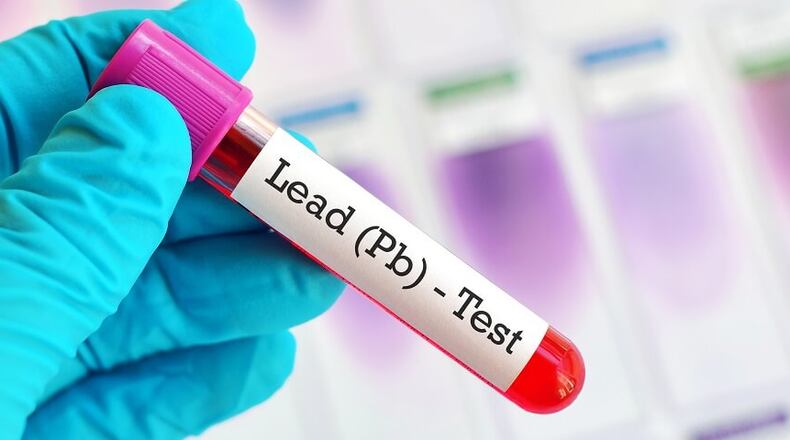On Wednesday, DeWine announced plans to create a new tax credit of up to $10,000 for eligible individuals who spend money to make their homes lead-safe. He also said he would set aside $450,000 over two years for worker training to boost the lead hazard control workforce.
Lead poisoning can lead to brain and nervous system damage, slowed development, hearing and speech impairments and behavior problems. There is no safe level of lead and no way to reverse damage already done by lead poisoning.
Since 2016, 14,022 children under age 6 have tested positive for elevated lead levels, according to the Ohio Department of Health.
Patricia Barnes of the Lead-Free Kids Coalition said the number of kids testing positive has declined since 1999 but in the last few years the number has plateaued.
Barnes said Ohio needs to take a preventative approach by providing money to local partners to work on lead safe housing through testing and proper abatement; use state leverage to increase the number of low-income children tested for lead poisoning; and make better use of Medicaid grant money that can be used on lead abatement in housing.
She also noted that there should be more early intervention to work with kids who have tested positive for lead poisoning so that they don’t fall behind in school.
DeWine announced Wednesday his intention to earmark an additional $24 million for the Ohio Department of Developmental Disabilities to provide therapy services to kids with dangerously high lead levels.
“I can’t even believe it sometimes that we have a governor who cares about this issue and kids. I have to pinch myself,” said Barnes, who has been working on lead poisoning for more than 25 years.
In Ohio, exposure is most likely to be through lead-based paint in houses built before 1978.
When a child tests positive for lead poisoning, health officials investigate and can order property owners to abate lead exposure or require that the property be vacated and posted as a hazard. Across Ohio, there are 1,081 such properties, including 111 in the Miami Valley.
Related: Area young children still poisoned by lead, state data show
State law mandates lead testing for children under 6 if they leave in a zip code determined to be a high-risk area. The law also requires testing of all Medicaid-enrolled children at ages 1 and 2 and up to age 6 if the kid hasn’t been previously tested.
DeWine announced plans to hold medical providers and managed care organizations accountable for testing all eligible children enrolled in Ohio Medicaid. Currently, 60 percent of the eligible kids in Medicaid are tested.
Scott Bruns, project manager for Rebuilding Together Dayton, said Dayton seems to lack the interest in addressing the lead poisoning problem. Outreach, education and abatement efforts have withered over the years but the issue remains, particularly with the old housing stock in the city, he said.
Flint is still grappling with a lead contamination crisis in its water system that started unfolding in Michigan in 2014. In September 2016, a new Ohio law took effect that requires 1,851 public water systems to post maps of known or likely lead service lines.
Since November 2015, Ohio has earmarked $5.17 million in state and federal money to address the problem – funds used on prevention and education, job training in lead paint abatement, and programs to remove the hazardous lead from houses.
What are the signs of lead poisoning?
Abdominal pain and cramping
Aggressive behavior
Constipation
Difficulty sleeping
Headaches
Irritability
Loss of previous developmental skills
Low appetite and energy
Reduced sensations
Source: National Institutes of Health
Gov. Mike DeWine’s multi-prong approach to address lead poisoning in children:
Testing. Hold providers and managed care organizations accountable for testing Medicaid-eligible children. Currently, just 60 percent are tested.
Early Intervention. Earmark $24 million for the state Department of Developmental Disabilities to provide physical, speech and occupational therapy to children with dangerously high lead levels
Lead Abatement. Use $10 million in Medicaid funds to pay for investigation and remediation of lead hazards in homes.
Tax Credits. Give income tax credits of up to $10,000 for eligible individuals who spend money to make their homes lead-safe.
Workforce. Set aside $450,000 to reimburse individuals who incur costs to become licensed lead workers.
About the Author

